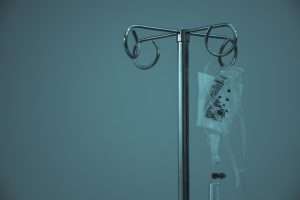Maximizing Your Tax-Free Healthcare Dollars
Did you know that FSA eligible over the counter items include thousands of everyday health products you can purchase using pre-tax dollars? This little-known advantage could save you anywhere from 20-50% on products you’re already buying. That’s like getting an automatic sale on everything from bandages to pain relievers!
| Common FSA-Eligible OTC Categories | Examples | Prescription Needed? |
|---|---|---|
| Pain Relief | Advil, Tylenol, Aspirin | No |
| Allergy & Sinus | Claritin, Zyrtec, Flonase | No |
| Cold & Flu | Cough suppressants, throat lozenges | No |
| First Aid | Bandages, antiseptics, first aid kits | No |
| Digestive Health | Antacids, anti-diarrheals | No |
| Women’s Health | Menstrual products, pregnancy tests | No |
| Eye & Ear Care | Contact solution, reading glasses | No |
| Skin Care | Sunscreen (SPF 15+), acne treatments | No |
| Home Diagnostic | Thermometers, blood pressure monitors | No |
Every year, I see the same unfortunate pattern – millions of Americans forfeit their hard-earned FSA funds simply because they don’t realize what they can buy. It’s like leaving money on the table! Since the 2020 CARES Act, the situation has dramatically improved, with over 4,000 over-the-counter products becoming eligible for FSA reimbursement without prescriptions. This game-changing expansion includes common medications and menstrual care products that many of us purchase regularly anyway.
I’m Les Perlson, and over my 40+ years in the health insurance industry, I’ve helped countless clients stretch their healthcare dollars further through smart FSA usage. Working with NPA Benefits has shown me how proper education about FSA eligible over the counter items can transform how employees view their benefits package. There’s something deeply satisfying about helping people find they can use pre-tax dollars for products they’re already buying.

Looking for specific information about FSA eligible over the counter items? Here’s a simple guide to some popular categories:
– FSA eligible breastfeeding supplies – from pumps to storage bags
– FSA eligible first aid supplies – everything you need for home safety
– FSA eligible medical supplies – everyday health essentials
FSAs 101 & Game-Changing Rule Updates
A Flexible Spending Account (FSA) is like having a special piggy bank for healthcare expenses—but with amazing tax benefits! Your employer sets up this account, allowing you to contribute pre-tax dollars for qualified medical expenses. For 2024, you can stash away up to $3,200 in your healthcare FSA, which you can spend on a wide variety of fsa eligible over the counter items.
I’ve seen countless people miss out on these savings simply because they didn’t understand how flexible these accounts really are. As one tax specialist who works with FSA administrators told me, “If people knew just how flexible a Health FSA is when it comes to what it can buy, very few of us would have a surrendered balance.” This is especially true since the 2020 CARES Act dramatically expanded what you can purchase.
FSAs operate under IRS Code Section 213(d), which has a surprisingly broad definition of qualified medical expenses: amounts paid for the “diagnosis, cure, mitigation, treatment, or prevention of disease, or for the purpose of affecting any structure or function of the body.” In plain English? Thousands of everyday health products qualify!
| FSA Rules | Pre-2020 (ACA Rules) | Post-2020 (CARES Act) |
|---|---|---|
| OTC Medicines | Required prescription | No prescription needed |
| Menstrual Products | Not eligible | Fully eligible |
| Non-Drug OTC Items | Eligible without Rx | Eligible without Rx |
| Annual Contribution Limit | $2,750 (2020) | $3,200 (2024) |
| Documentation | Rx needed for medicines | Receipt showing eligible item |
These changes aren’t just good for your wallet—they’re good for our healthcare system too. According to a 2012 study commissioned by the Consumer Healthcare Products Association, the use of OTC medicine could save the U.S. healthcare system $102 billion per year. Your FSA dollars contribute to these savings while stretching your own healthcare budget.
How a Flexible Spending Account Works
Think of an FSA as a subscription service for healthcare savings. When you sign up during your employer’s open enrollment period, you decide how much to contribute for the upcoming year (up to that $3,200 limit for 2024). Your employer then slices that amount into equal portions and deducts them from each paycheck—before taxes are calculated. This means you’re saving on federal income tax, Social Security, and Medicare taxes on every dollar you contribute!
Here’s the cool part: you have immediate access to your full annual election amount on day one of the plan year, even though you haven’t yet contributed the full amount through payroll deductions. Need expensive dental work in January? You can use your entire FSA amount even though you’ve only had one paycheck that year. It’s like getting an interest-free loan from your future self.
The most important thing to remember about FSAs is the “use-it-or-lose-it” rule. Those FSA dollars typically vanish if not used by the end of the plan year. However, many employers offer some flexibility through either:
- A grace period giving you up to 2.5 extra months to spend remaining funds, or
- A carryover option allowing up to $610 (for 2024) to roll over to the next plan year
As one major pharmacy retailer bluntly puts it on their FSA information page: “FSA dollars are ‘use or lose’ so spend your dollars now before they expire.” This makes understanding fsa eligible over the counter items essential for maximizing your benefits.
Key CARES Act Changes You Need to Know
The Coronavirus Aid, Relief, and Economic Security (CARES) Act of March 27, 2020, brought two permanent game-changers to FSA rules that continue to benefit millions of Americans:
First, it removed the prescription requirement for OTC medicines and drugs. Before 2020, you needed a doctor’s prescription to use FSA funds for common items like Tylenol, Claritin, or cold medicine—a hassle that discouraged many people from using their FSA for these everyday purchases. The CARES Act eliminated this requirement, instantly making thousands of common OTC medicines eligible without jumping through extra hoops.
Second, it added menstrual care products as qualified medical expenses. For the first time ever, products like tampons, pads, liners, cups, and similar items became FSA-eligible. This change corrected a long-standing oversight in healthcare policy. As one FSA administrator explained, “Although these products were classified as ‘cosmetics’ for much of the 20th century, in 1976, the U.S. Food and Drug Administration reclassified them as medical products as they are ‘intended to affect the structure or any function of the body…'”
The best part? These changes are permanent—not temporary pandemic measures—giving you more flexibility in how you use your FSA dollars for years to come. According to scientific research on annual IRS inflation adjustments, these limits will likely continue to rise with inflation, giving you even more tax-free healthcare spending power in the future.
Want to learn more about what qualifies? Check out our guide on FSA Eligible Meaning for a deeper dive into what makes an item FSA-eligible.
FSA Eligible Over the Counter Items: Medicines, Supplies & Everyday Health Helpers
Imagine walking through your local pharmacy and realizing that nearly half the store could be purchased with your pre-tax FSA dollars! Your FSA can cover an impressive range of FSA eligible over the counter items – from everyday pain relievers to specialized health supplies.
OTC Medicines & Drugs (No Rx Needed After 2020)
Remember the days of chasing down your doctor for a prescription just to buy Tylenol with your FSA? Thankfully, those days are gone! The CARES Act was a game-changer for FSA users.
Now you can grab pain relievers like Tylenol, Advil, and Aleve without that prescription hassle. Suffering from seasonal sniffles? Your FSA covers allergy medications like Claritin, Zyrtec, and Flonase too.
Caught that office cold? Your FSA has your back with cough suppressants, throat lozenges, and all those cold and flu remedies that help you power through. Tummy troubles are covered too – from antacids like Tums to anti-diarrheal medications.
“I used to skip using my FSA for medicines because the prescription requirement was such a pain,” shares one of our clients. “Now I stock my medicine cabinet guilt-free, knowing I’m saving about 30% on everything thanks to using pre-tax dollars.”
Other eligible medications include skin treatments for acne and fungal infections, sleep aids for those restless nights, and smoking cessation products like nicotine patches and gum. Even insulin has always been FSA-eligible without a prescription.
Non-Drug Health Supplies
Beyond medicines, your FSA covers an incredible array of health supplies that many people don’t realize qualify.
That first aid kit for your home? FSA-eligible. Those bandages, gauze, and antiseptics? All covered. Your FSA can even pay for more sophisticated items like thermometers, blood pressure monitors, and glucose testing supplies.
Vision care essentials are included too. Those reading glasses you keep in every room? Your contact lens solution and eye drops? All FSA-eligible without any special documentation.
“I was shocked when I learned my FSA covered my daughter’s knee brace after her soccer injury,” one parent told us. “We also used FSA funds for hot and cold packs during her recovery.”
Your FSA extends to family planning with pregnancy tests and contraceptives, baby care with breast pumps and supplies, and respiratory care with humidifiers and saline sprays. Even items like ear wax removal kits and orthotic inserts for your shoes make the eligible list.
The Treasury Department specifically recognizes these products as eligible because they directly address health concerns – they’re not just convenience items but real healthcare necessities.
Vitamins, Supplements & Dual-Purpose Items
Here’s where things get a bit tricky. Not everything in the vitamin aisle is automatically FSA-eligible. The IRS draws a line between treating specific conditions and maintaining general health.
Standard multivitamins typically don’t qualify because they’re considered general wellness products. However, prenatal vitamins do qualify, as do supplements like glucosamine for joint health.
What about those items that could be either medical or non-medical? These “dual-purpose” items require a Letter of Medical Necessity (LMN) from your healthcare provider. This document needs to explain your specific medical condition, why the item helps treat it, and how long you’ll need it.
For example, a massage device might seem like a luxury item, but with an LMN documenting its use for treating a diagnosed back condition, it could become FSA-eligible. The same goes for items like humidifiers, special foods for medical conditions, and even exercise equipment prescribed for rehabilitation.
“The LMN process is actually simpler than most people think,” explains one healthcare provider. “I write several for patients each month – it’s just a matter of documenting why the item is medically necessary rather than just nice to have.”
Your FSA is a powerful tool for managing healthcare costs. By understanding what qualifies as FSA eligible over the counter items, you can stretch those tax-free dollars further than you might have imagined. For a complete listing of eligible products, check out our detailed guide to FSA Eligible Products.
Buying, Paying & Claiming: Make Your FSA Dollars Work
Now that you know what treasures you can buy with your healthcare dollars, let’s talk about the “how” part. Purchasing FSA eligible over the counter items doesn’t have to be complicated—in fact, it’s gotten much easier in recent years!
In-Store & Online Shopping Tips
Remember when using your FSA meant drowning in paperwork? Those days are (mostly) behind us. Today, buying FSA-eligible items is almost as simple as regular shopping.
When you’re browsing the aisles at CVS, Walgreens, Target or Walmart, keep an eye out for those little “FSA Eligible” shelf tags. They’re like little flags saying, “Hey, you can use your pre-tax dollars on me!” Many stores have acceptd technology that makes checkout a breeze, too. Their Inventory Information Approval System (IIAS) automatically flags eligible items, separating them from your regular groceries at the register.
“I was amazed the first time I saw my receipt split into FSA and non-FSA items automatically,” says Maria, a healthcare administrator. “The system even declined my FSA card for the pack of gum I tried to sneak through!”
If you prefer shopping in your pajamas (and who doesn’t?), online options have exploded in recent years. Amazon now has a dedicated FSA/HSA section where everything is pre-verified as eligible. There are even specialized websites that exclusively sell FSA eligible over the counter items, eliminating any guesswork.
Holiday season approaching with FSA funds still in your account? Consider a strategic year-end stock-up. While the IRS frowns upon buying 50 bottles of sunscreen on December 31st (yes, that’s excessive!), purchasing reasonable amounts of items you’ll use in the coming months is perfectly acceptable. Think 1-3 packages of regularly used items per month—new contact solution, your favorite pain reliever, or that special first aid tape that actually stays stuck.
Documentation & Reimbursement Best Practices
There are basically two paths to FSA paradise: using your FSA debit card or paying out-of-pocket and filing for reimbursement.
Most employers now offer FSA debit cards, which work just like regular debit cards but pull directly from your FSA balance. They’re incredibly convenient—swipe and go! But don’t toss those receipts into the trash. Even with the card, your administrator might request documentation to verify certain purchases. I keep a special envelope in my desk labeled “FSA Receipts” for just this reason.
For those dual-purpose items we talked about earlier (like that massage device that’s treating your diagnosed back pain), you’ll likely need your healthcare provider to complete a Letter of Medical Necessity. This document explains why you medically need an item that might otherwise be considered non-medical. Store this letter with your receipt—they’re a package deal.
If you’re paying out-of-pocket, the reimbursement process has gotten much smoother. Many FSA administrators offer mobile apps where you can simply snap a photo of your receipt and submit your claim in seconds. No more stamped envelopes or fax machines! Your reimbursement typically arrives within a week or two.
What makes a good receipt? It needs to clearly show:
– The specific product name (not just “pharmacy item”)
– Date of purchase
– Amount paid
– Where you bought it
“Think of your receipts as telling a story to the IRS,” explains tax professional James Miller. “They need to clearly show what medical item you bought, when, and for how much.”
Even if you’re a digital minimalist, hold onto those FSA records for at least 7 years. The IRS can audit health spending accounts during this period, and you’ll want documentation to back up every purchase. A simple digital folder or cloud storage solution makes this painless.
With these smart shopping and documentation strategies, you’ll be making the most of your FSA eligible over the counter items in no time. Your wallet—and your tax bill—will thank you!
More info about How to Know if a Product is FSA Eligible
Frequently Asked Questions about FSA Eligible Over the Counter Items
Are vitamins and nutritional supplements FSA-eligible?
When it comes to vitamins and supplements, the IRS draws a clear line in the sand. Regular multivitamins and supplements that simply support general health typically aren’t FSA-eligible. Think of it this way: if you’re taking it just to stay healthy (like a daily multivitamin), your FSA probably won’t cover it.
But don’t worry – there are some notable exceptions that might surprise you! Prenatal vitamins absolutely qualify for FSA coverage, recognizing their crucial role in maternal and fetal health. Similarly, glucosamine and chondroitin supplements for joint health typically make the cut as well.
“The distinction really comes down to treatment versus maintenance,” explains one FSA specialist I spoke with recently. “If you’re treating a specific medical condition rather than just maintaining general health, that’s when supplements start becoming eligible.”
If your doctor has prescribed specific vitamins or supplements to treat a diagnosed medical condition, you may be able to use your FSA funds with proper documentation. You’ll need a Letter of Medical Necessity from your healthcare provider that explains your condition and why the supplement is medically necessary. This letter is your golden ticket to using FSA eligible over the counter items that might otherwise be off-limits.
What happens if I don’t use all my FSA funds by year-end?
The infamous “use it or lose it” rule keeps many FSA holders awake at night as December approaches. In its basic form, any FSA money left unspent at the end of your plan year goes back to your employer – not exactly the holiday gift you were hoping for!
Fortunately, many employers now offer some flexibility through one of two options:
Your plan might include a grace period giving you up to 2.5 extra months to use your remaining funds. If your plan year ends December 31st, this means you’d have until mid-March to spend those dollars on FSA eligible over the counter items before they disappear.
Alternatively, your employer might offer a carryover option allowing up to $610 (for 2024 plans) to roll over into next year’s FSA. This can be a real lifesaver if you suddenly realize you have unspent funds as the deadline approaches.
Here’s the catch – employers can offer either the grace period OR the carryover option, but never both. And some employers offer neither, sticking strictly to the traditional “use it or lose it” approach.
“I always tell clients to check their plan details in October,” shares a benefits consultant I know. “That gives you enough time to make a spending plan if you find you have a substantial balance left.”
Your HR department or FSA administrator can tell you which rule applies to your specific plan. Don’t be shy about asking – it’s literally your money at stake!
Can I buy OTC items for my spouse or dependents with my FSA?
Here’s some great news that many people miss: your FSA isn’t just for you! You can absolutely use your FSA to purchase FSA eligible over the counter items for your spouse and qualifying dependents, even if they’re not covered under your health insurance plan.
This family-friendly feature means your FSA can cover cold medicine for your spouse, bandages for your kids, or contact solution for your college student who’s on a different insurance plan (or no insurance at all). As long as the person qualifies as your dependent for tax purposes or is your spouse, your FSA has them covered.
I recently helped a client who didn’t realize she could use her FSA to buy her husband’s prescription eyeglasses or her daughter’s acne medication. She was thrilled to find her FSA could stretch further than she thought!
This flexibility makes FSAs particularly valuable for families, turning one account into a healthcare resource for multiple people. Just remember that the items still need to be medically necessary and qualify as FSA eligible over the counter items – your teenager might want to classify that gaming console as “therapy,” but the IRS probably won’t agree!
When you’re shopping for family members with your FSA funds, you’ll follow the same purchasing and documentation rules as you would for your own expenses. Keep those receipts handy, especially if you’re buying dual-purpose items that might require additional documentation.
Conclusion & Next Steps
We’ve covered a lot of ground about FSA eligible over the counter items, and I hope you’re feeling more confident about putting your healthcare dollars to work. These are your hard-earned pre-tax funds – and with a little planning, you can avoid the disappointment of watching them disappear at year-end.
Think about it: the average American family spends hundreds of dollars annually on everyday health essentials. When you purchase these items with your FSA, you’re essentially giving yourself an instant discount equal to your tax rate – potentially 20-30% savings on products you’d buy anyway!
The first step is knowing where you stand financially. Take a moment to log into your FSA portal or call your administrator to check your current balance. While you’re there, confirm your plan year deadline and whether your employer offers a grace period or carryover option. This information is your foundation for smart FSA planning.
Next, grab your family’s medicine cabinet inventory (or better yet, take a quick photo of what you have). Compare it against the FSA eligible over the counter items we’ve discussed and identify gaps. Do you need to restock pain relievers? Has your sunscreen expired? Could your first aid kit use refreshing? These everyday essentials make perfect FSA purchases.
Looking ahead is equally important. Do you have a child starting contact lenses soon? Planning an active summer that might involve sports injuries? Consider your family’s upcoming health needs when prioritizing your FSA spending.

If you’re approaching your deadline with a substantial balance, it’s time for a spending strategy. Rather than panic-buying random items, focus on quality health products with decent shelf lives. A good blood pressure monitor or thermometer will serve your family for years. Sunscreen, bandages, and over-the-counter medications are always useful to have on hand.
Documentation might not be the most exciting part of healthcare, but it’s crucial for FSA compliance. Keep those receipts! Even when using your FSA card, save detailed documentation showing exactly what you purchased. I recommend snapping quick photos with your phone and storing them in a dedicated folder – much easier than digging through paper receipts if questions arise later.
For those specialty or dual-purpose items we discussed, remember to obtain proper documentation before purchasing. A quick call to your doctor explaining why you need that special pillow for your neck pain could mean the difference between reimbursement and rejection.
At NPA Benefits, we’re passionate about helping businesses create flexible, cost-saving health insurance options that give both employers and employees more control over their healthcare spending. Our self-funded health insurance plans work beautifully alongside consumer-directed healthcare accounts like FSAs, creating a comprehensive approach to managing healthcare costs.
FSAs represent just one piece of a smart healthcare strategy. By understanding what’s eligible and planning thoughtfully, you’re not just reducing your taxable income – you’re taking control of your family’s health and wellness budget.
For deeper dives into specific FSA topics, our resources at NPA Benefits can help you steer the details:
– FSA Eligible Products
– How to Know if a Product is FSA Eligible
– FSA Eligible Meaning
Your healthcare dollars are too valuable to waste. With the knowledge you’ve gained about FSA eligible over the counter items, you’re now equipped to make the most of every pre-tax dollar. Happy FSA shopping!









